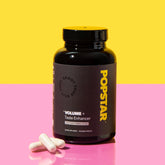In men’s health discussions, the term “Cumload” is often informally used to describe the volume and consistency of semen released during ejaculation. While not a formal medical expression, its usage highlights a broader interest in reproductive health, fertility, and sexual confidence. In this article, we’ll explore what influences ejaculate volume, how it relates to overall wellness, and what factors might increase or decrease semen production. By combining scientific perspectives, practical strategies, and easy-to-understand explanations, we aim to offer useful insights into this colloquial term often used in men’s sexual health conversations.
Table of Contents
- What Is Cumload?
- The Physiology Behind Ejaculation Volume
- Factors Influencing Cumload
- Natural Ways to Enhance Cumload
- Clinical Perspectives & Potential Interventions
- Frequently Asked Questions
- Conclusion
- References
What Is Cumload?
Though not a medically recognized term, “Cumload” is commonly used in casual settings to describe the volume of semen a man emits during orgasm. Semen itself is composed of sperm cells, seminal fluid, prostate secretions, and other components such as fructose and enzymes. The volume can vary widely among individuals and even from one ejaculation to the next. Factors such as hydration levels, frequency of ejaculation, and overall health can contribute to short-term fluctuations. Meanwhile, more entrenched factors, like hormonal balance or infections, can affect long-term volume.
The slang term entered the popular lexicon through adult content and informal conversations, but understanding it can open the door to more comprehensive knowledge about male reproductive health. While “Cumload” is not taught in medical school, the science underlying semen production is well documented. The significance of healthy sperm parameters and a normal semen volume is often linked to fertility and broader sexual well-being. Moreover, for some men, enhancing this volume is about confidence, intimacy, and a desire to optimize their body’s natural physiology.
From a men’s health standpoint, it’s important to differentiate between myths and facts. Some sources over-simplify techniques or supplements claiming to dramatically increase ejaculate volume with little scientific backing. This article seeks to clarify these misunderstandings, ensuring readers have reliable, detailed information. Ultimately, a deeper appreciation of the body’s complex processes can lead to improved health outcomes and more informed choices about sexual wellness.
The Physiology Behind Ejaculation Volume
Semen production is orchestrated by several organs and glands. The testes generate sperm cells, while the seminal vesicles and prostate gland create a fluid medium that nourishes and transports these cells. This combined fluid, along with other minor glandular contributions, forms the semen that is eventually expelled during orgasm. The prostate, for example, secretes a protective fluid vital for sperm viability, while the Cowper’s glands (bulbourethral glands) contribute a lubricating fluid designed to neutralize the acidic environment in the urethra. These factors work together to ensure sperm survival and facilitate successful fertilization.
Ejaculation typically unfolds in two main phases: emission and expulsion. During the emission stage, semen components are mobilized into the urethra—this process involves smooth muscle contractions fueled by signaling from the sympathetic nervous system. The expulsion phase is dominated by rhythmic contractions of pelvic muscles that force the semen out through the urethral opening. Peak pleasure, often referred to as the climax or orgasm, typically coincides with these muscular contractions.
The volume of ejaculate can vary between approximately 1.5 mL to 5 mL, although these ranges are not strict boundaries. Short-term changes in fluid balance—such as dehydration—may lead to reduced volume, while increased sexual arousal and prolonged foreplay can sometimes heighten fluid production. Moreover, when men abstain from ejaculation for several days, volume typically rises during the next release, reflecting built-up stores within the seminal vesicles and other glands. However, hormonal imbalances, infections, or structural problems within the reproductive tract can also alter the normal physiology.
Hormones like testosterone, follicle-stimulating hormone (FSH), and luteinizing hormone (LH) play significant roles in sperm and semen production. Testosterone, produced primarily by the testes, underpins libido, muscle mass, and sperm creation. FSH and LH, released by the pituitary gland, direct the testes to generate sperm and produce testosterone. An imbalance in these hormone levels can manifest as decreased semen volume, lowered libido, or other related issues. By understanding these interconnected pathways, one gains a clearer picture of what can increase or decrease the so-called “Cumload.”
Factors Influencing Cumload
Multiple elements work in concert to determine your ejaculate volume. Though some are genetic, many are lifestyle-related and can be adjusted for better overall health and possibly greater semen output. Below is an overview of key factors:
- Hydration: Adequate water intake is crucial for healthy semen production. Fluids help transport sperm cells, improve fluid consistency, and maintain healthy bodily functions overall.
- Diet and Nutrients: Specific nutrients, such as zinc, vitamin C, and other antioxidants, support sperm health and semen quality. Foods rich in amino acids, like L-arginine, may also help optimize blood flow and overall reproductive health.
- Hormonal Balance: Testosterone and other hormones are essential for the entire reproductive cycle. Factors like stress, obesity, or certain health conditions can disrupt these hormones.
- Ejaculation Frequency: While more frequent ejaculations can temporarily reduce the volume of each release, periods of brief abstinence usually replenish stores, leading to a larger “Cumload.”
- Age: As men age, their testosterone levels can drop. Over time, sperm quality and ejaculate volume may gradually decline, although healthy lifestyle habits can slow this process.
- Medications and Substance Use: Some prescription medications, along with smoking and excessive alcohol consumption, can reduce both the quantity and quality of semen.
- Infections or Medical Conditions: Unresolved sexually transmitted infections (STIs) or conditions like prostatitis can affect ejaculate volume. Similarly, genetic and anatomical factors can come into play.
Stress and mental health also impact semen production indirectly. Chronic stress increases cortisol levels in the body, which can significantly reduce testosterone output and impair fertility markers. Moreover, mental well-being is tied to sexual desire and performance, so feeling calm, confident, and emotionally healthy often correlates with more robust sexual and reproductive function.
Finally, it’s important to recognize that measurable changes in semen volume due to lifestyle adjustments usually take time. Sperm and seminal fluid production is an ongoing process that requires several weeks to reflect dietary or lifestyle interventions. While short-term fluctuations are normal, consistent improvements are typically observed over a span of one to three months.
Natural Ways to Enhance Cumload
Many men explore ways to boost ejaculate volume in an effort to improve sexual satisfaction or support fertility goals. Below are natural, generally safe strategies that might help promote semen production and overall reproductive well-being. These suggestions are grounded in common medical knowledge, but individuals should still consult a healthcare provider for personalized advice, especially when faced with significant concerns or pre-existing conditions.
- Improved Nutrition: A balanced diet rich in protein, vitamins, minerals, and antioxidants lays the groundwork for healthy sperm. Prioritize fresh fruits, vegetables, whole grains, lean meats, and healthy fats (like avocados and nuts). Zinc, found in foods like oysters, pumpkin seeds, and beef, is especially significant for sperm creation and hormonal regulation.
- Consistent Hydration: Drinking enough water ensures a stable fluid environment for sperm cells. Proper hydration also helps maintain the fluid portion of semen, reducing its thickness and aiding in healthier ejaculation.
- Regular Exercise: Moderate exercise boosts cardiovascular health and can positively influence hormone regulation. Activities like strength training, brisk walking, or cycling may elevate testosterone levels when pursued consistently. However, overtraining can have the opposite effect, so balance is key.
- Stress Management: Learning stress-reduction techniques such as yoga, meditation, or deep breathing can aid in stabilizing cortisol levels. Lowered cortisol helps sustain optimal testosterone production and can indirectly foster better semen quality.
- Adequate Rest: Sleep is essential for resetting hormonal cycles, facilitating muscle repair, and maintaining mental well-being. Aim for seven to nine hours of high-quality sleep each night to support your endocrine system.
- Limiting Toxins: Reducing alcohol, quitting smoking, and avoiding illicit drugs can significantly improve overall reproductive function. These substances often compromise blood flow, hormone regulation, and sperm development.
- Timing and Foreplay: Prolonged arousal can sometimes lead to a more robust expulsion of semen, as the reproductive system has more time to ramp up fluid release. Engaging in sufficient foreplay or spacing sexual activity appropriately might produce a modest boost in ejaculate volume.
When trying to enhance “Cumload” naturally, patience is paramount. Realistically, changes to diet or lifestyle can take several weeks or months to yield noticeable effects. Furthermore, individuals differ in their baseline semen volume due to genetic makeup, age, and underlying health conditions. By maintaining consistency in these natural approaches, many men see improvements not only in ejaculate volume but also in overall sexual satisfaction and well-being.
Clinical Perspectives & Potential Interventions
Though lifestyle adjustments often yield positive results, there are instances in which medical intervention or specialized therapies may be necessary. Difficulty with ejaculation volume may signal underlying issues like hormonal imbalances, anatomical blockages, or chronic infections. Below are some avenues clinicians may explore, depending on a patient’s specific condition:
- Hormone Testing: A blood test can measure testosterone, FSH, and LH levels, helping healthcare providers identify potential imbalances that influence sperm production and semen volume. If levels are off, treatments such as testosterone replacement therapy or other hormonal therapies might be explored.
- Assessment of the Reproductive Tract: Imaging techniques, physical examinations, or semen analyses can detect structural issues, obstructions, or varicoceles (enlarged veins in the scrotum) that impact fluid output.
- Infection Screening: Undiagnosed infections like chlamydia or gonorrhea can diminish semen production. Antibiotic treatments tailored to these conditions may resolve either partial or complete congestion in the reproductive pathways.
- Prescription Medications: Certain medications (e.g., alpha-blockers) can help address ejaculatory dysfunction. However, these should only be taken under direct medical supervision, as they might carry side effects or risks.
- Fertility Treatments: For men trying to conceive, assisted reproductive technologies such as in vitro fertilization (IVF) or intrauterine insemination (IUI) may circumvent issues of low ejaculate volume by isolating and utilizing viable sperm. This can be particularly useful in cases where sperm count is normal but volume is low.
It’s imperative to consult healthcare professionals for personalized advice. Self-diagnosis or reliance on overhyped claims can sometimes delay the discovery of more pressing medical issues. By prioritizing routine check-ups and open, honest discussions with qualified practitioners, men stand a better chance of identifying correctable problems while developing healthy strategies that align with their unique physiology.
Additionally, psychological components cannot be overlooked. Sometimes, lowered self-confidence or performance anxiety can overshadow the physical aspects of male reproduction. Mental health counseling or therapy, particularly when partnered with medical care, can enhance overall well-being and improve outcomes associated with ejaculate volume.
Frequently Asked Questions
What is the average semen volume in men?
Several medical references often note a range between 1.5 mL and 5 mL per ejaculation. While this range is broad, factors like hydration, frequency of sexual activity, and genetics make each man’s “average” unique. If you consistently notice significantly less than 1.5 mL, you may want to consult a healthcare provider to rule out any underlying condition.
Is “Cumload” directly linked to fertility?
While sperm count and motility are more critical for fertilization, a higher semen volume can sometimes support sperm transport. Volume alone isn’t the defining factor of fertility, but extremely low volumes might indicate potential issues, such as incomplete emission or blockages in the reproductive tract. A thorough fertility evaluation typically includes semen analysis, hormone testing, and an assessment of overall health.
Can certain foods or supplements boost ejaculate volume?
Foods high in zinc (e.g., oysters, pumpkin seeds), antioxidants (e.g., berries, spinach), and essential fatty acids (e.g., salmon) may support overall reproductive health. Supplements like L-carnitine or vitamin E show promise in some studies, but results can vary. Always consult a healthcare professional before experimenting with supplements—especially if you’re on other medications or have existing health concerns.
Does abstinence really increase semen volume?
Short-term abstinence, typically 2–3 days, can build up the fluid within the seminal vesicles, often leading to somewhat larger semen volumes upon the next ejaculation. However, extended abstinence (beyond a week or more) is unlikely to continually amplify ejaculate volume. In fact, extremely prolonged abstinence can occasionally reduce overall sperm quality.
Are medications available to increase semen volume?
Presently, no specific prescription medication is solely approved for increasing semen volume. Some treatments, like those addressing hormonal imbalances or certain ejaculatory issues, may indirectly improve ejaculate volume. Medications such as alpha-blockers can affect the mechanics of ejaculation, but they might also introduce side effects. Always speak with a healthcare provider before taking any medication.
How do I know if my semen volume is normal?
What’s considered “normal” can vary a lot. If you’re curious, a semen analysis ordered by a healthcare professional can provide reliable information about semen volume, sperm count, motility, and morphology. This test remains the gold standard for diagnosing potential issues related to male reproductive health. If results fall outside typical ranges, further evaluations may be necessary.
What if lifestyle changes don’t improve my “Cumload?”
If you’ve tried adjusting your diet, exercising consistently, managing stress, and improving your sleep without seeing noticeable improvements, it might be time to consult a urologist or other men’s health specialist. Underlying factors like hormonal imbalances, anatomical irregularities, or chronic infections may be at play. A professional evaluation can tailor a treatment plan to your specific needs.
Does the intensity of orgasm correlate with ejaculate volume?
While a more intense orgasm can sometimes feel like it yields a larger ejaculate, research suggests that orgasm intensity is more related to nerve sensitivity and muscular contractions than pure semen volume. Foreplay duration and arousal can enhance ejaculatory force, but it may not substantially change the total fluid quantity. However, psychological factors can play a role in how men perceive their “Cumload.”
Conclusion
“Cumload,” despite its informal roots, highlights men’s ongoing fascination with semen volume and how it intertwines with fertility, sexual health, and self-confidence. Understanding the physiological basis—from hormone regulation to seminal fluid production—provides crucial insights into the many factors that can affect ejaculate volume. Lifestyle interventions, such as a balanced diet, regular exercise, adequate sleep, and stress management, often make a tangible difference. Meanwhile, medical evaluations or advanced treatments may be warranted in cases where lifestyle adjustments fail to yield results or when underlying health problems are suspected.
Ultimately, each man’s reproductive system is unique. Temporary fluctuations in ejaculate volume are normal and not necessarily indicative of a health issue. If you have concerns, reaching out to a healthcare provider can ease worries and, when necessary, expedite the discovery of correctable problems that might hinder sexual or reproductive wellness. By engaging thoughtfully with your body and maintaining open communication with healthcare professionals, you can take proactive steps towards optimizing your overall health and well-being.
References
- National Institutes of Health (NIH). (2021). Male Reproductive Health. Retrieved from https://www.nichd.nih.gov/health/topics/mensrepro
- World Health Organization. (2021). WHO Laboratory Manual for the Examination and Processing of Human Semen. Retrieved from https://www.who.int/publications/i/item/9789240030787
- Mayo Clinic. (2021). Male infertility. Retrieved from https://www.mayoclinic.org/diseases-conditions/male-infertility/symptoms-causes/syc-20374773
- PubMed Central. (2020). Semen Analysis Research. Retrieved from https://www.ncbi.nlm.nih.gov/pmc/?term=semen+analysis


































